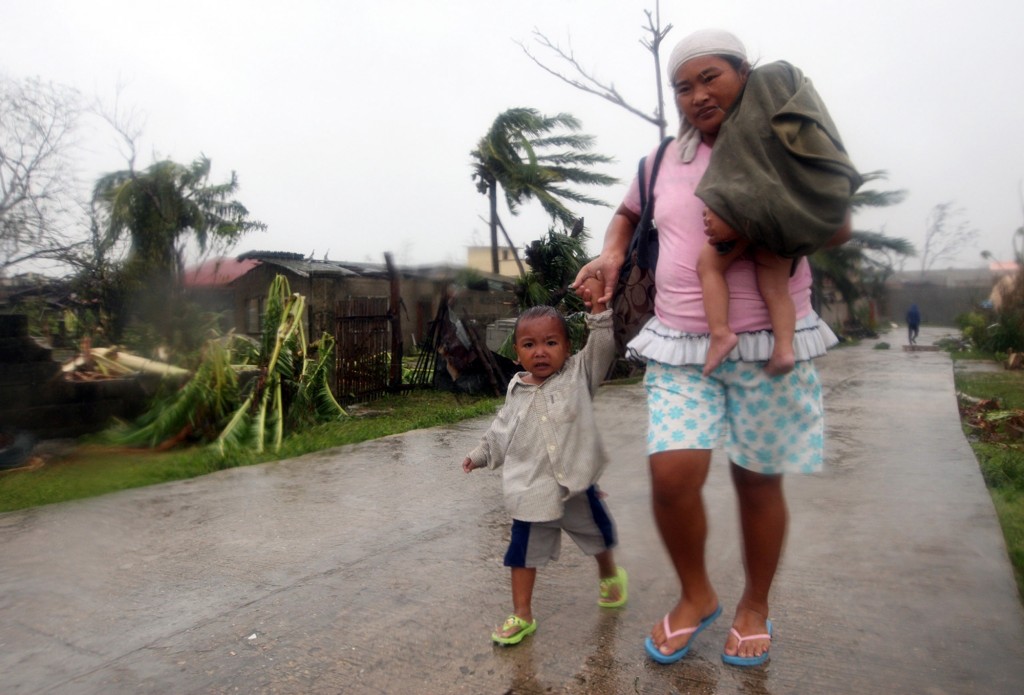
Residents transfer at the evacuation center after their houses were damaged by Supertyphoon “Yolanda” in Daanbantayan Nothern Cebu. CDN FILE PHOTO
MANILA, Philippines – Tropical cyclones hitting the Philippines inflict more and longer-lasting economic loss, increase in mortality rates and poverty-worsening effects, a study by the University of California said.
The research conducted by economists Solomon Hsiang of the University of California, Berkeley, and Jesse Antilla-Hughes of the University of San Francisco found that while officials report roughly 740 deaths on average every year due to typhoon exposure in the Philippines, post-typhoon mortality among baby girls is approximately 15 times higher, likely due to the indirect poverty-worsening effects of the storm.
“The risk of a baby girl dying after a typhoon doubles if she has older sisters in the home, and the risk doubles again if the she has older brothers – suggesting that the competition for resources among siblings may play a key role in these deaths,” the study said.
“Infants are more fragile than other family members, and some can’t handle it when families cut back. Their health deteriorates gradually, and then one day, they just don’t pull through,” said Hsiang.
Hsiang added that economic factors are vital, because roughly half of the baby girls who die weren’t even born or conceived when the various storms hit.
Hsiang and Anttila-Hughes said that the high death rate for baby girls is probably the specific result of the economic aftermath that follows a typhoon’s destruction and the coping strategies used by families that struggle economically for months or years after a typhoon.
Significantly, the report said that when particularly strong storms strike, incomes may fall more than 15 percent the following year – compounding loss from damage to a family’s home and belongings. And although or maybe partially because typhoons are a regular weather feature in the Philippines, families don’t seem to save in advance or borrow much money for recovery costs.
“The fact that we continue to observe large typhoon impacts in one of the world’s most intense typhoon climates where populations have already adapted suggests that costs are so high that populations think that they are better off suffering typhoon losses rather than investing in additional protection,” Hsiang said.
Hsiang said a central challenge for policy makers is to convince people to spend on costly investments that will protect them in the future. “It’s a bit like trying to convince people to wear a seat-belt while driving a car or a helmet while riding a bike,” Hsiang said.
The researchers suggest several policies to help improve the post-storm situation for Filipinos which is to develop credit subsidies for low-income families, expand insurance networks over larger regions to reduce risk, educate parents about the risks of post-typhoon child neglect, tax goods like tobacco and alcohol to finance subsidies for children, enhance enforcement of building codes, increase typhoon-related research and development funding.
Related stories
‘Yolanda’ revives compensation row at UN climate talks
Del Rosario: ‘Yolanda’ a sign of climate change
Human activity driving climate change–leaked report
Pinoy youth urged: Fast for climate change pact
UN lauds Philippines’ climate change laws ‘world’s best’